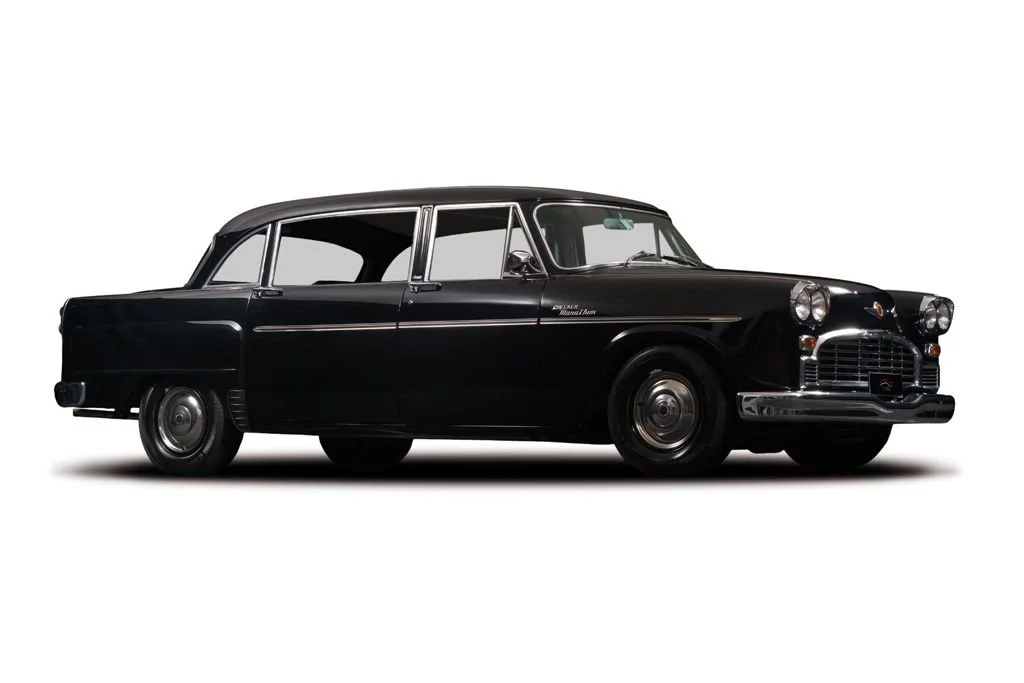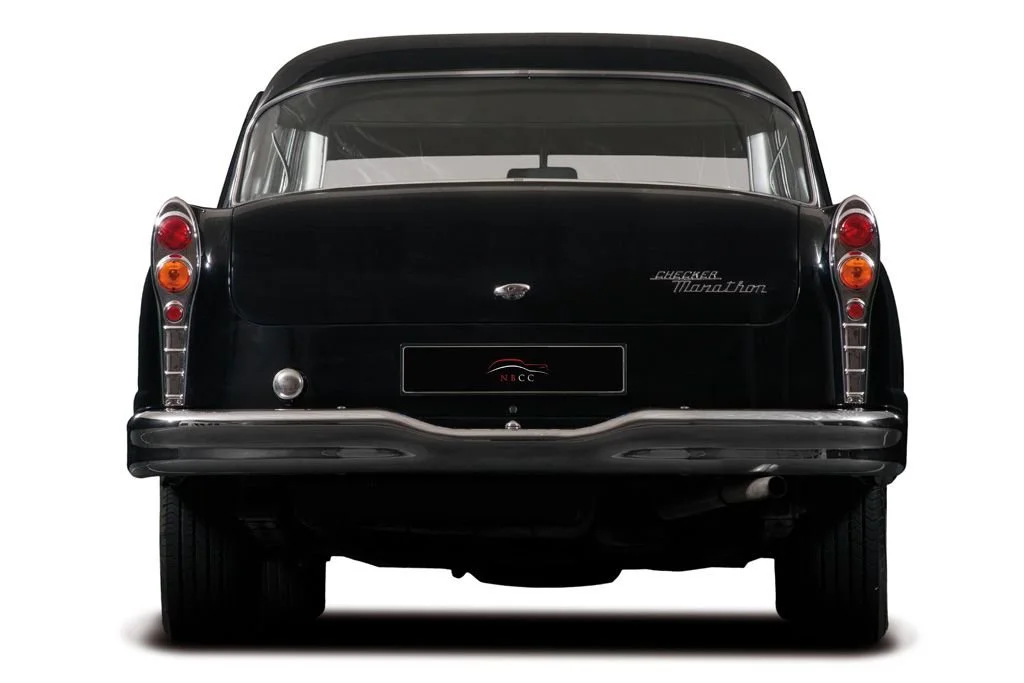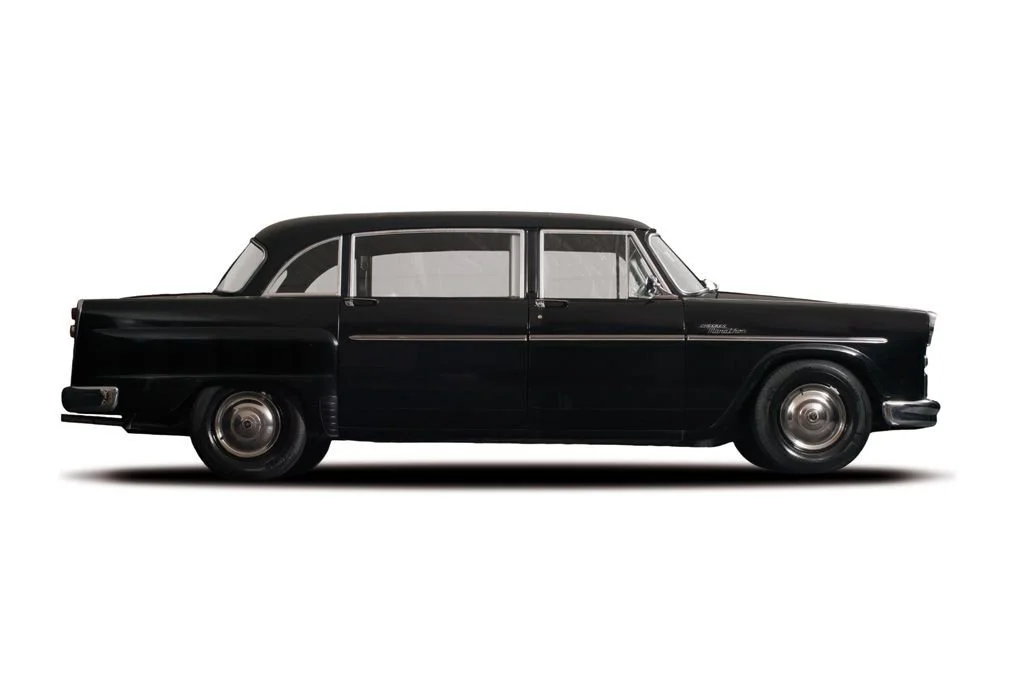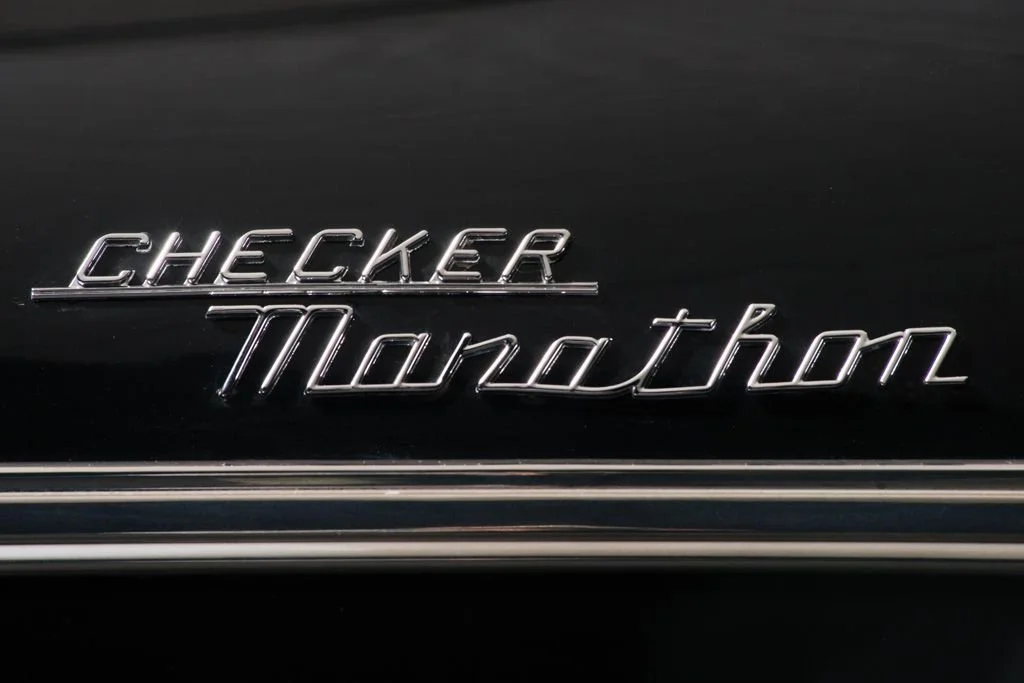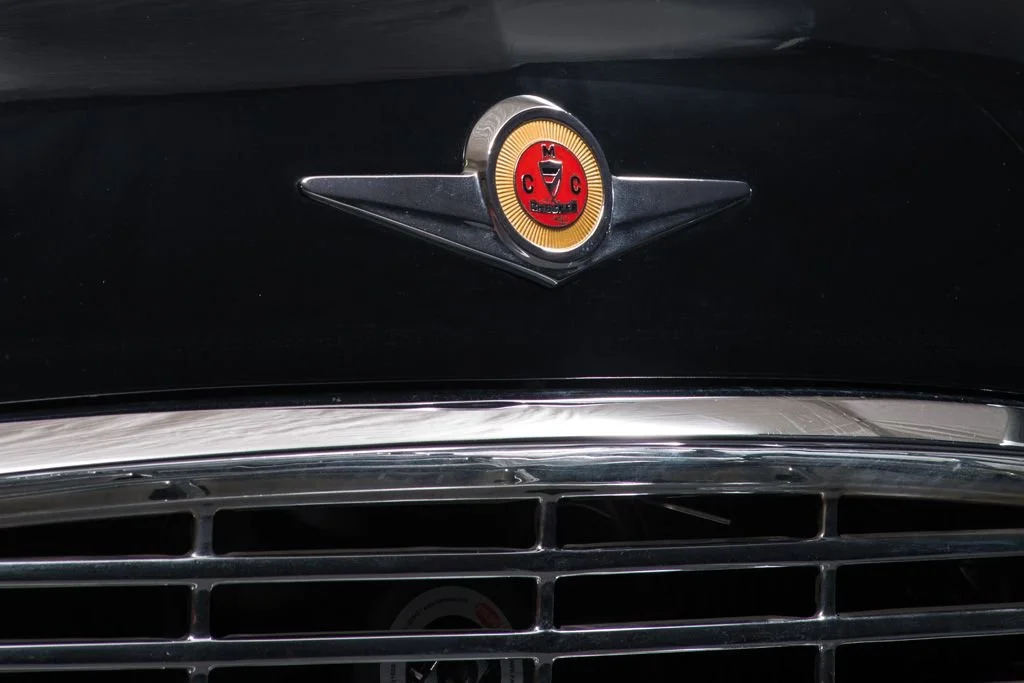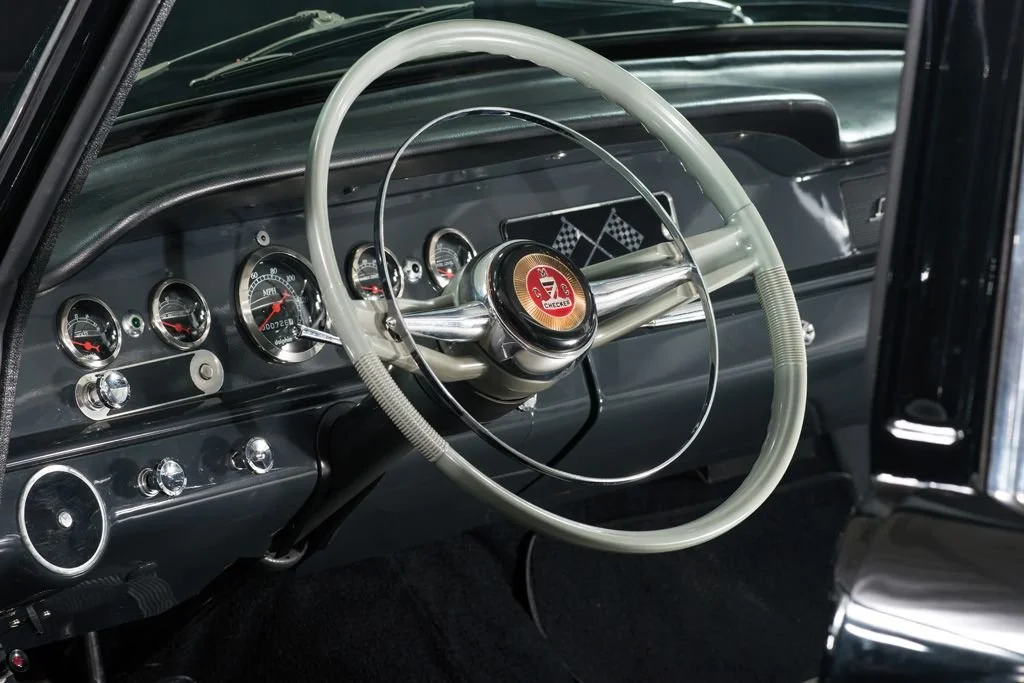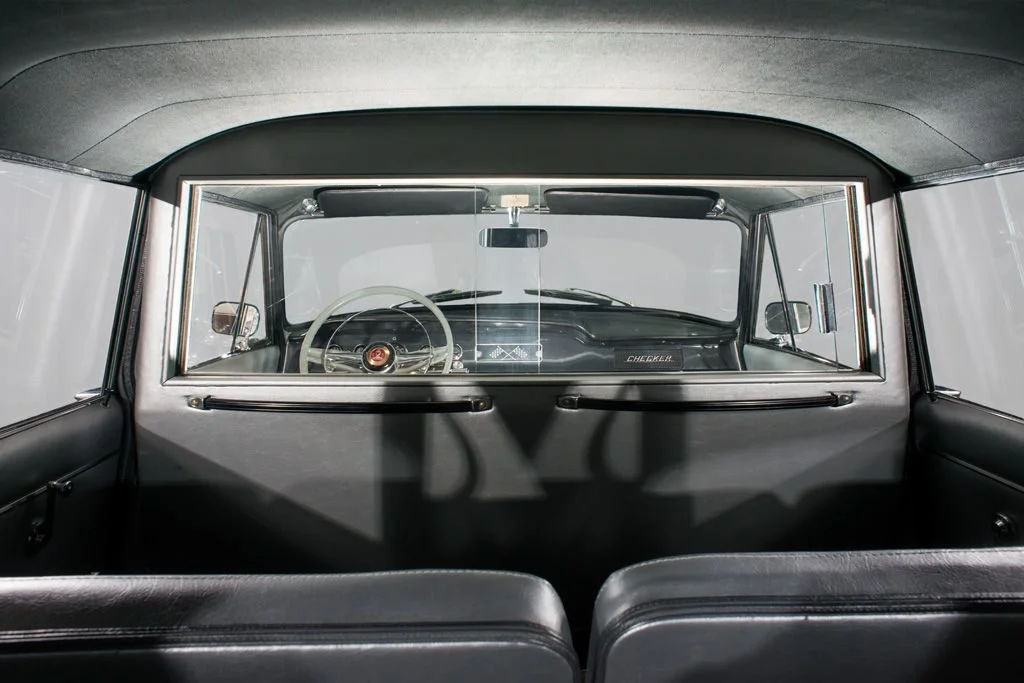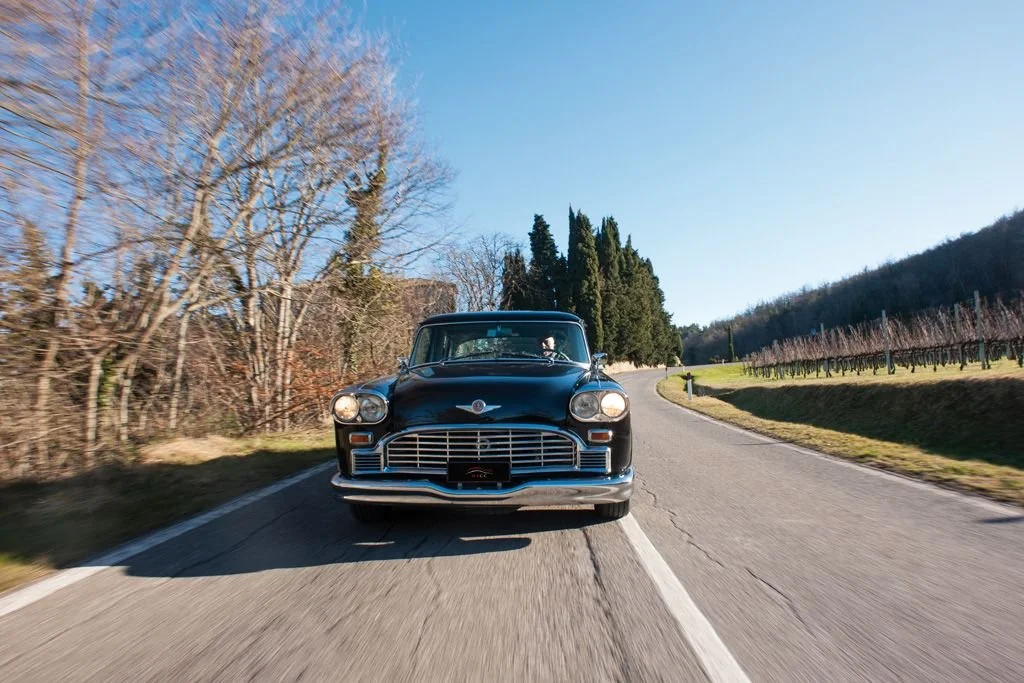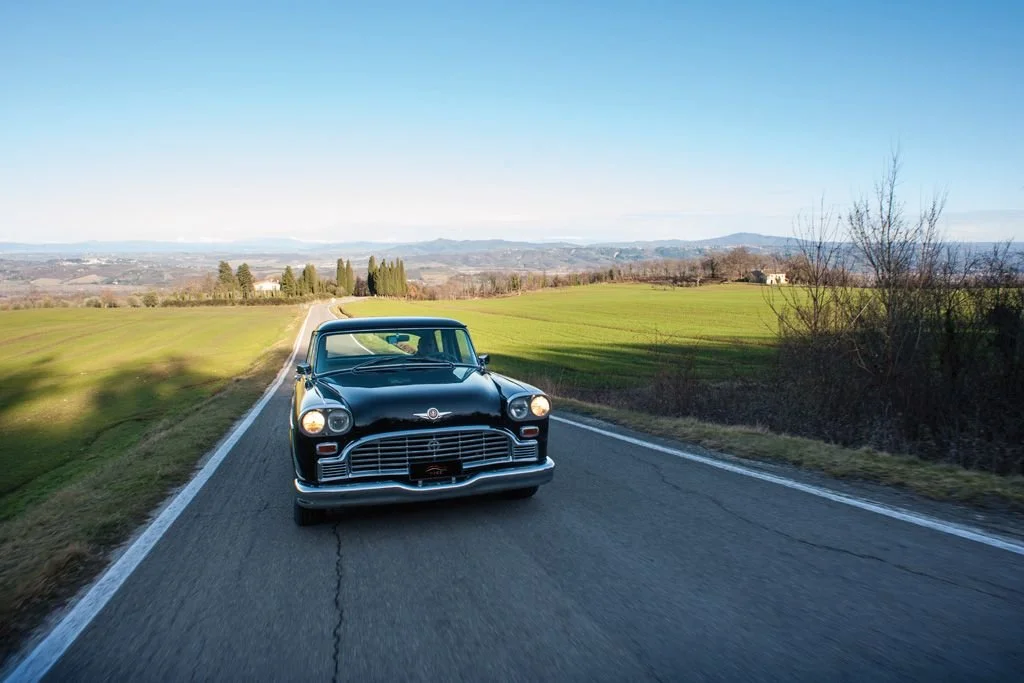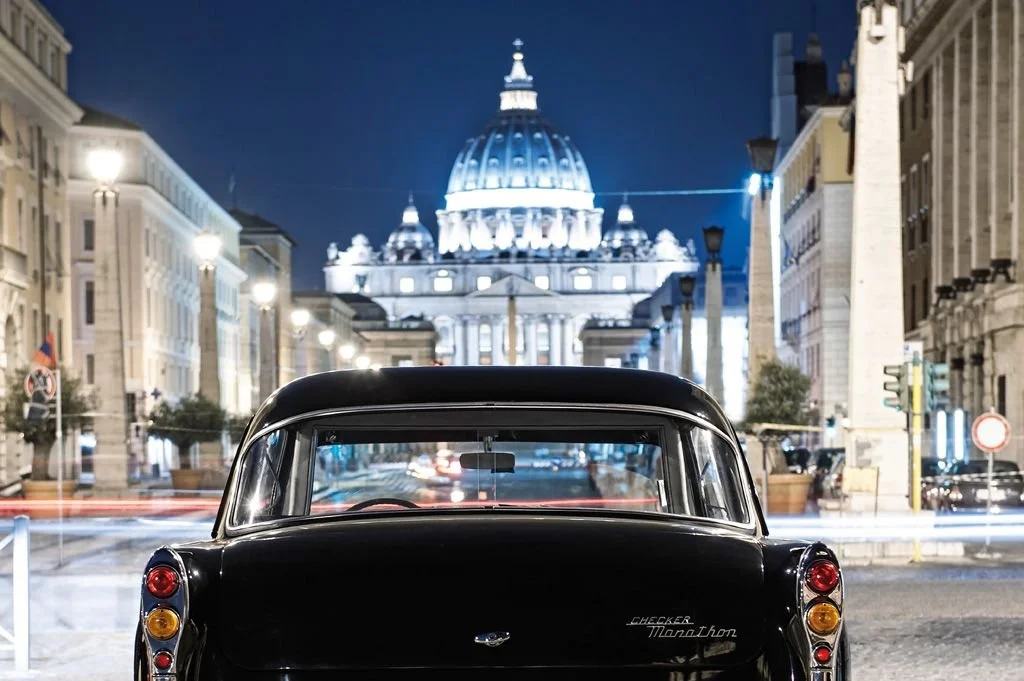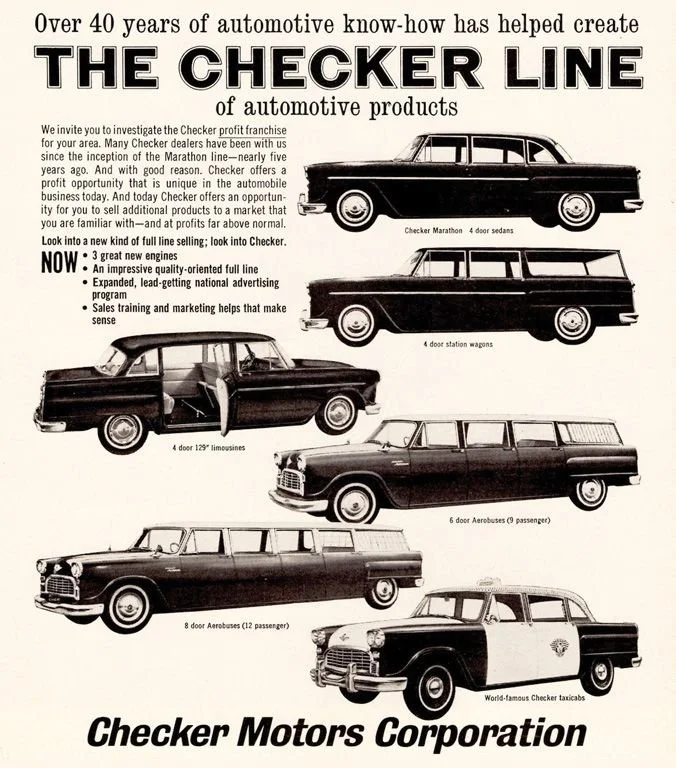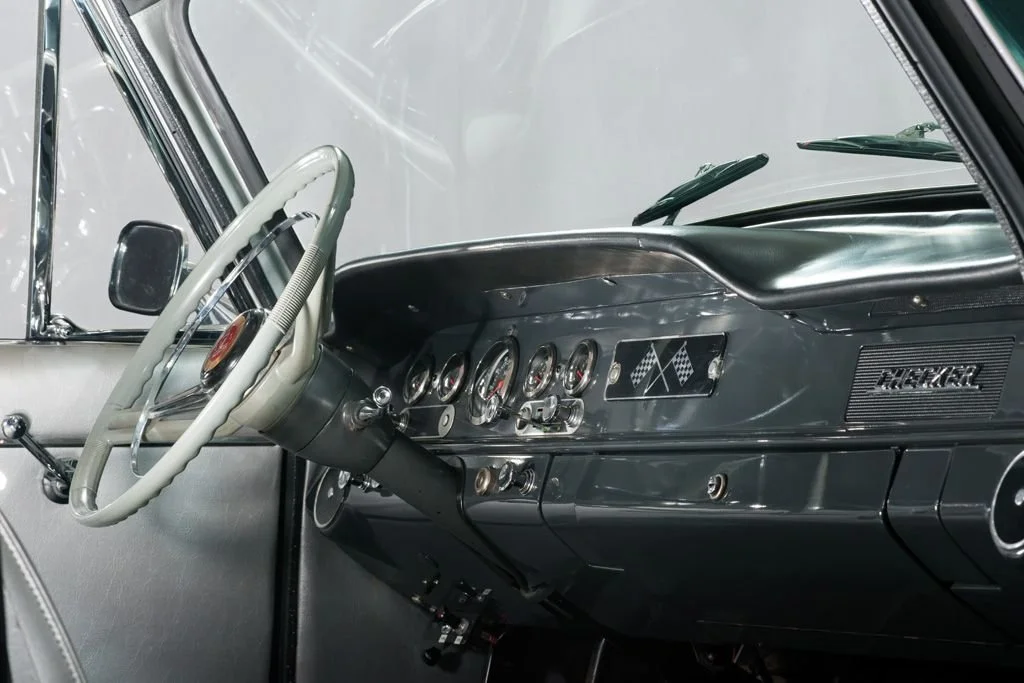-
The Checker specimen of the Nicola Bulgari collection is a 1965 Marathon Town Custom Limousine model with a 129 inch wheelbase, longer than the standard models. Built for civilian transport, as opposed to the famous taxis of the brand, this car was sold new in Germany and then used in Italy in the Vatican State. After this noble service, the Checker was parked at an Italian multi-brand dealership and later bought by Edoardo Ansaloni a collector from Bologna.
In 2009 it joined the Nicola Bulgari collection and in 2010 it was restored, faithfully respecting the original. The body was separated from the chassis and the chrome parts sent to specialists in the USA, as were the instruments of the dash. It was also decided to replace the engine while staying true to the original: a brand new 283 cu. in. V8 small block sourced from Chevrolet. Finally, while the bodywork was being restored in Italy, the interior was entrusted to upholsterers Autoselleria Massenzi in Rome.
Today this Checker Marathon Limousine from the mid-sixties represents a rare, and more unusual, testimonial to the brand from Kalamazoo, Michigan. -
Company
Checker Motors CorporationWheelbase
129inInterior trim
Silver leatherBrakes
front and rear drumsMake
CheckerLength
211inEngine
V8 - 283cidTires
G78x15Model
Marathon LimousineWidth
76inCarburetor
1 Rochester 2-barrelOriginal Price
$4,541Body style
4-door LimousineWeight
3823lbsHorsepower
195hp @ 4800rpmModel year
1965Exterior paint
BlackTransmission
manual 3-speed -
Checker Motors Corporation was a Kalamazoo, Michigan, based vehicle manufacturer and tier-one subcontractor that manufactured taxicabs used by Checker Taxi. Checker Motors Corporation was established by Morris Markin in 1922 through a merger of Commonwealth Motors and Markin Automobile Body.
Checker made the iconic American taxi cab which was valued by taxicab companies for its durability in heavy use. Special features included large rear seats and trunks. The company had trouble competing with fleet discounts offered by the larger manufacturers as well as economies of scale in procuring components. The final models were produced in 1982.
In addition to automobile production, Checker played a significant role as a third-party automotive supplier of OEM body stampings. In the late 1930s, Checker produced truck bodies for Hudson in addition to manufacturing complete Ford truck cabs. Checker also produced truck bodies for the REO Motor Car Company. During World War II, Checker was one of many producers of the G518 Ben Hur trailer for the U.S. Army.
The company entered the consumer passenger car business in 1958 and consumer automobiles were phased in regionally across the US in 1959 starting in New York and New England. Nationally, the introduction of the Checker Superba took place at the Chicago Auto Show on February 8, 1960.
Joining the Superba in 1962 was the Marathon, which took the place of the Superba Special. The Marathon consisted of standard and long-wheelbase sedans, plus station wagons. Wagons came standard with a motorized fold-down rear seat, which combined with different bodies pushed the price up $350 above the sedan. Limousines were also offered as Checker sought to tap into yet another specialty market.
The dealer network continued to grow throughout the early 1960s, and throughout the decade Checker usually managed its target volume of 6000-7000 cars a year. In 1962, production topped 8000, although most of those were taxis. Four-door sedans and station wagons (Superba and Marathon models) were also advertised to individual customers in upscale publications. The ads emphasized the durability of the Checker and the attention to quality improvements. In 1962 almost 3,000 cars were sold to individuals, 20% of production, but that percentage declined to 10% in the 1970s.
In 1964 the state of New York pursued Markin and Checker on antitrust charges, alleging that it controlled both the taxi service and manufacture of taxis, and thus favored itself in fulfilling orders. Rather than allow Checker drivers to begin buying different brands of cars, Markin began selling licenses in New York City. The next year, the company switched from the standard Continental engine, offering either Chevrolet 230 cu. in. (3.8 l) overhead-valve I6s or 283 cu. in. (4.64 l) small block V8s.
Civilian models were as utilitarian as their fleet counterparts, sporting a simple, flat dashboard with round gauges (this would remain unchanged up to the final Checkers in 1982). -
Until 1929 the Vatican had no cars at all, relying on traditional horse-drawn carriages. It was only when it was established as a State that it acquired its first automobile, a Graham-Paige. That car remains in the Vatican museum to this day, but the other pre-war limousines that were used for VIP transport – Buicks, Cadillacs and Packards – were disposed of and eventually acquired by The NB Center.
The history of the Vatican limousines is astonishing. The NB Center’s archive includes photographs of several of them – brand new and still unregistered – being blessed by Pope Pius XI in 1938, of the Cadillacs with Pius XII and John XXIII, and of the cars’ use by notable figures including royalty, heads of state and high-ranking diplomats.
Some of these ex-Vatican cars were found in excellent condition; they were not much used, so their engines were near-perfect. Others fared less well; a Cadillac sold off in the early 1960s ended up in the 1970 movie ‘Patton’ and was in poor shape. One of the Packards was also used in movies and had acquired a different engine and transmission, leaving it with two shift levers. Nevertheless the underlying build quality of the cars is very evident; in some cases the chrome brightwork merely needed polishing.
The skilled and committed NB Center teams in Rome have learned a great deal from their colleagues in Allentown, and the repair and restoration of the Vatican cars were all managed entirely in-house by the mechanical staff led by Sergio Caudai and by the skilled bodyshop team of Carrozzeria A. Rizza.
The limousines have all received sensitive restoration, maintaining as much of their precious originality as possible. These exceptional and historic vehicles should stay in Rome, of course, but The NB Center intends to create a special place for them in the city, separate from the rest of the collection, where their intriguing story may be presented in all its fascinating detail.

